Brain tests are fun to attempt. Though it is difficult to get the answers straight and correct in the first attempt, it helps the brain exercise. In the image shown above, a person standing at position E is the focus of the question. There are four other people in the image, standing at different positions. As you can see from the picture, all you have to do is analyze it and guess who dies if E pushes the stone to the slide on the slope. This fun quiz is sure to boost your cognitive function!
SEE MORE: What Is The Car’s Parking Spot Number?
Who D .ies if E Pushes The Stone?
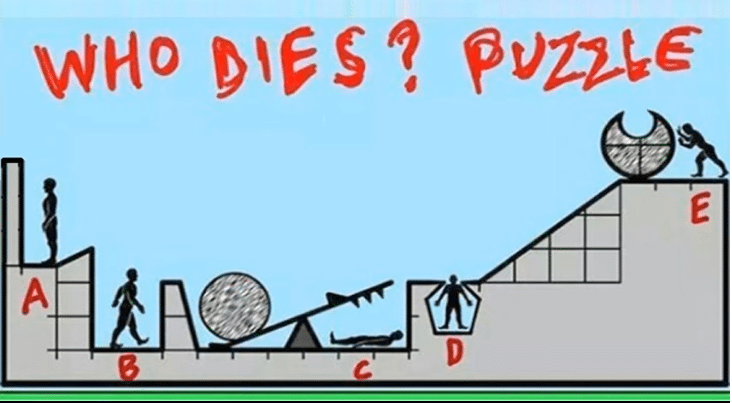
Here are the possible answers to who dies if E pushes the rock in this puzzle:
Answer 1: D and C
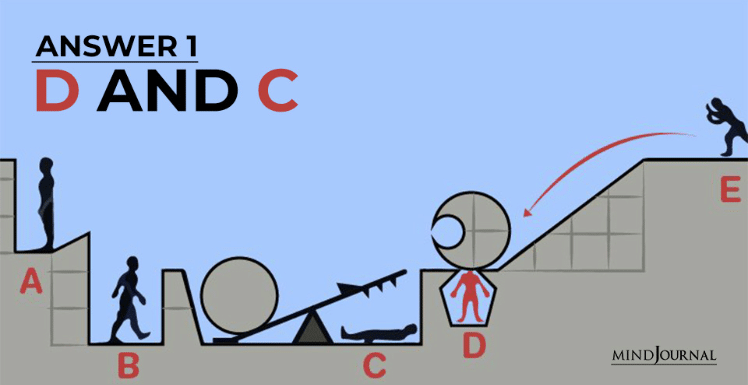
“D” may d .ie first as it clearly appears from the above scene that E has some grudge against D and has planned to k .ill him. But what if the crescent-shaped stone rolls down and hits the balance under which C is lying? In that case, C may d .ie too (provided the rock is very heavy)!
Answer 2: D, C, and E
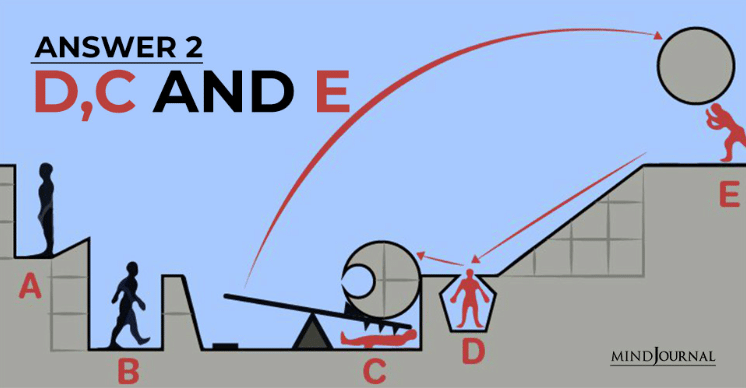
As per the above interpretation if both D and C are k .illed, then it is highly likely that the first stone pushed by “E” hits the balance, thereby, causing other stones on the balance to jump upwards and hit E in the end.
So, by pushing down one stone, D, C, and E – three are k .illed. However, this is possible only if the first rock was heavy enough to fling the big rock on the other side of the seesaw.
Answer 3: D, C, and B
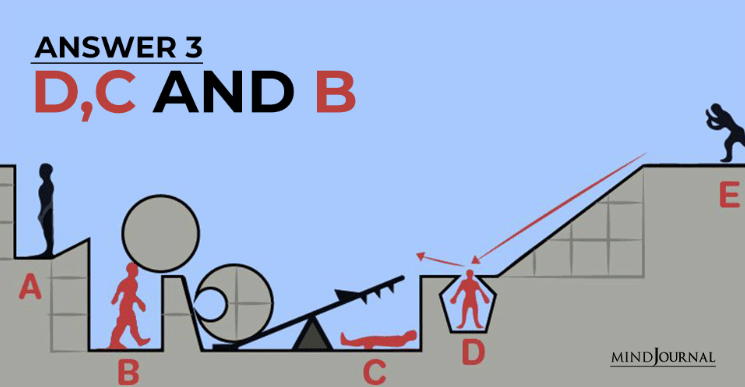
It may also happen that the second stone on the balance surge upwards and hits “B” instead of “E”. If this is true, then there will be three casualties – D, C, and B. But, this is possible only if the rock is heavy enough!
Answer 4: Only D
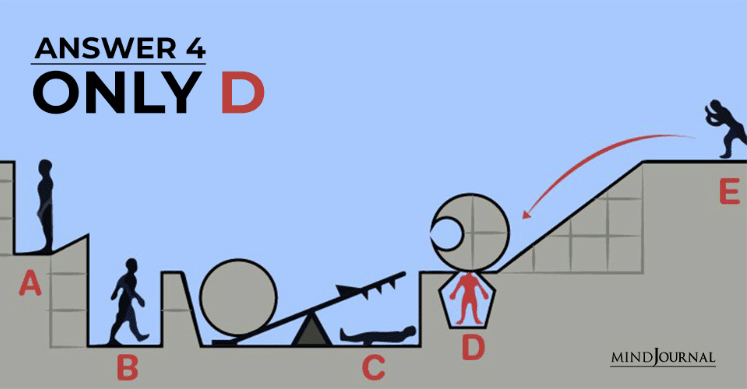
Only D and possibly C d .ie!
Keep in mind that the crescent rock does not have the same mass as the rock on the seesaw. Despite both rocks having the same diameter, the crescent rock has a huge missing section. Therefore, when E rolls down the crescent rock, it will not have enough mass to fling the big rock on the other side of the seesaw.
The only other person who could possibly d .ie is C, but that is only if the crescent rock is heavy enough to lower the seesaw’s plank.

